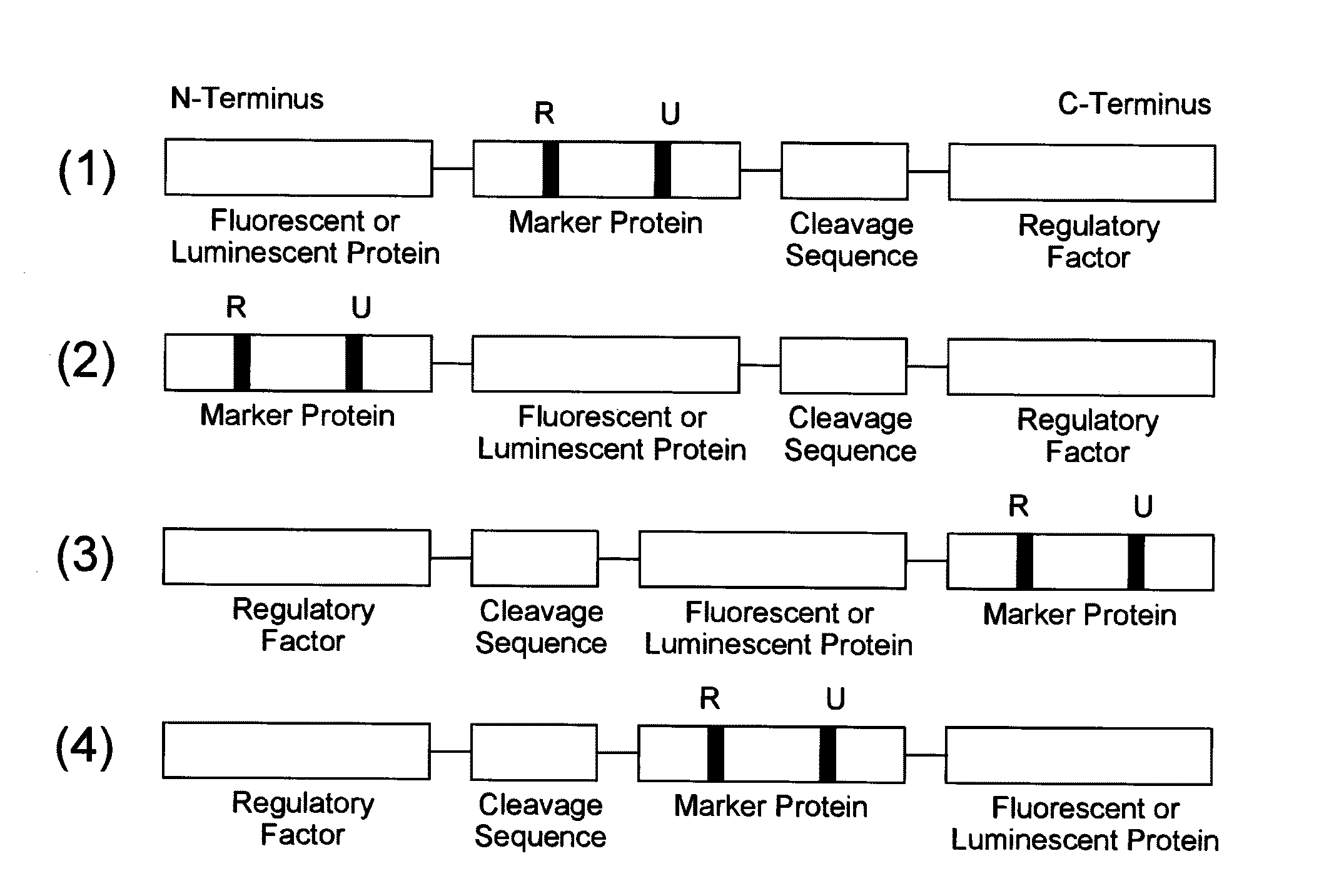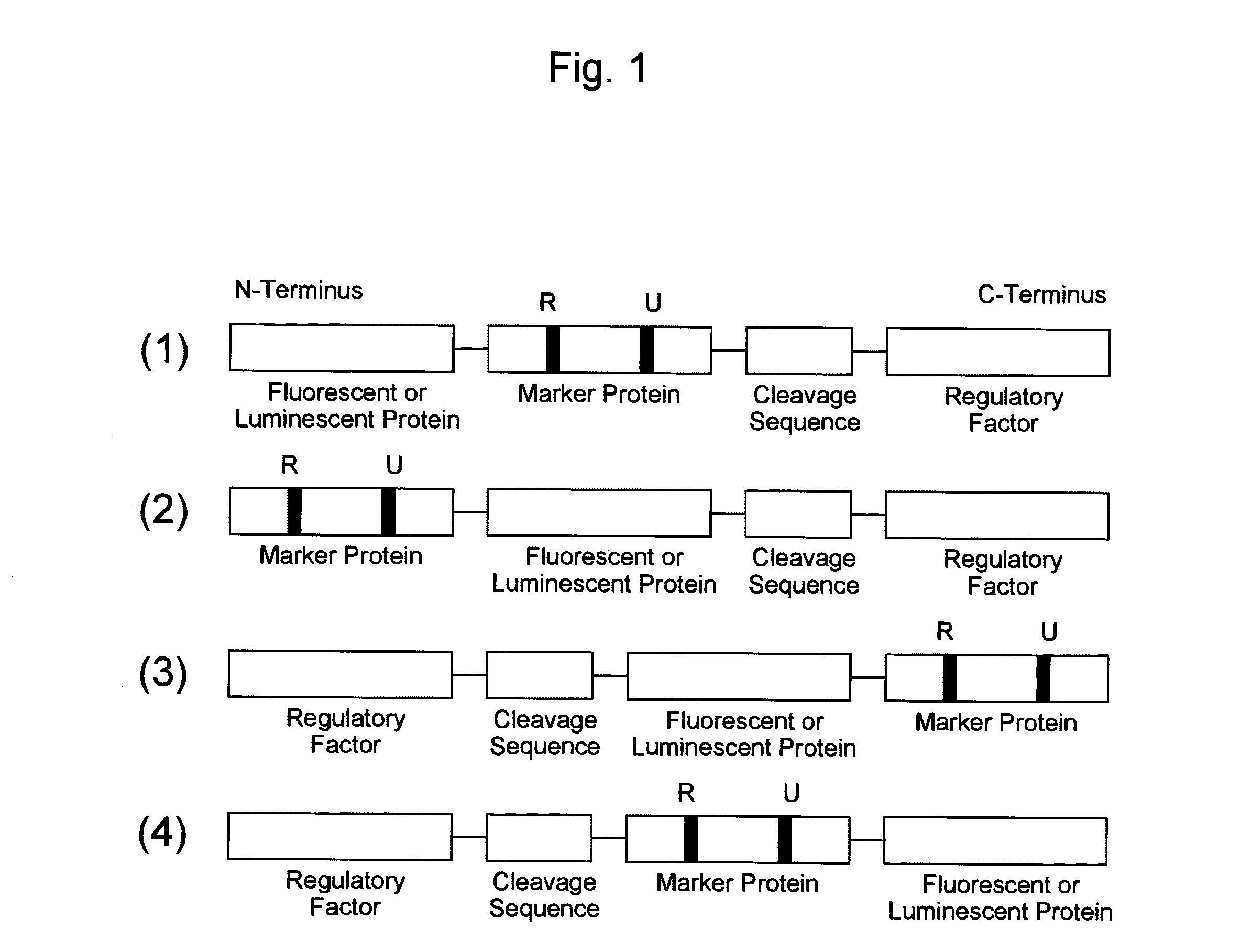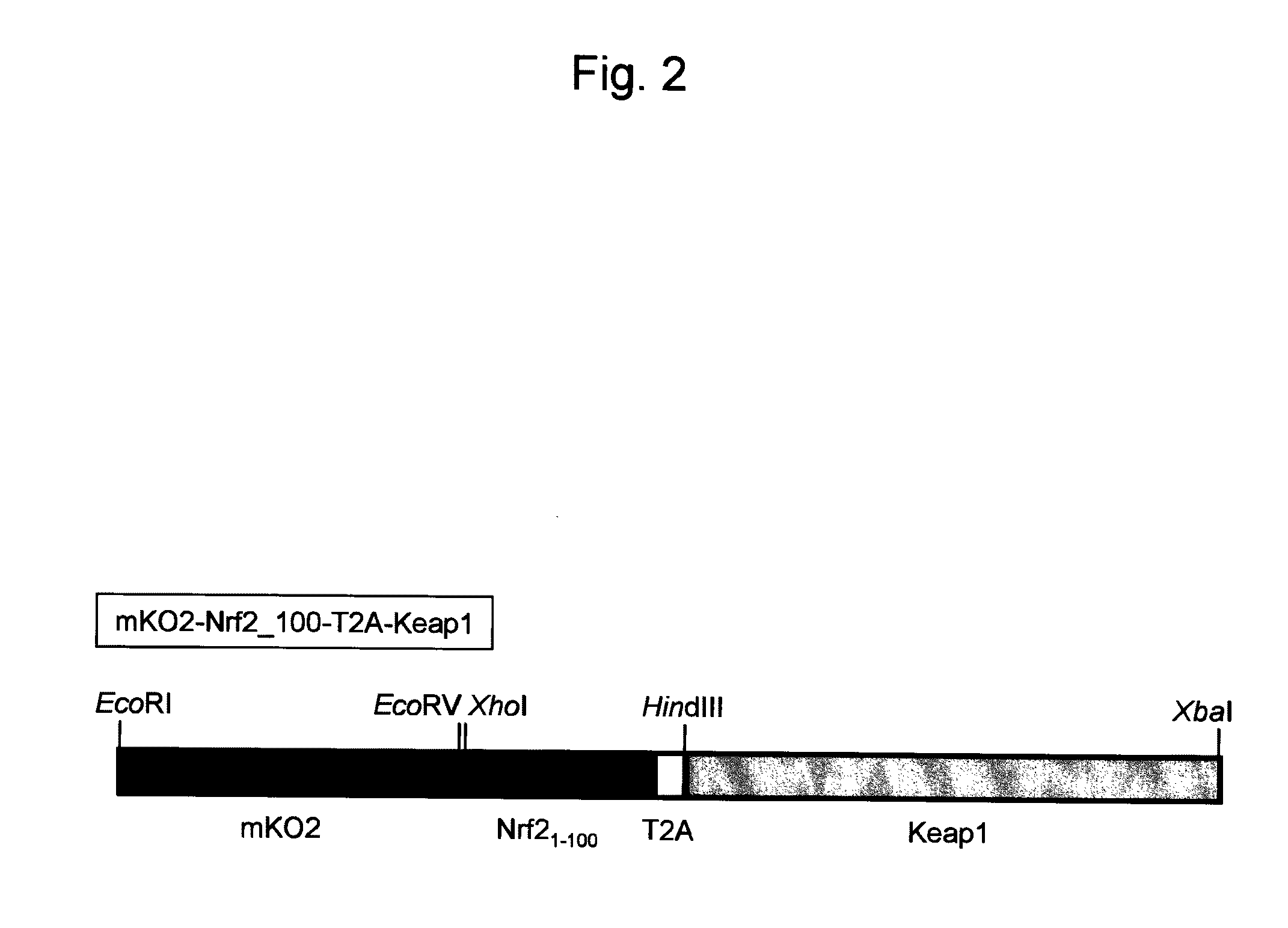Probe reagent for measuring oxidative stress
a technology of oxidative stress and probe reagents, which is applied in the direction of oxidoreductases, in-vivo radioactive preparations, depsipeptides, etc., to achieve the effect of efficient measurement of ros, prolonged integration time, and poor permeability across cell membranes
- Summary
- Abstract
- Description
- Claims
- Application Information
AI Technical Summary
Benefits of technology
Problems solved by technology
Method used
Image
Examples
example 1
Design of a Probe Reagent
[0149]As an example of a probe reagent having the feature described above, a probe reagent for measuring oxidative stress was prepared using mKO2 as a fluorescent protein, Nrf2 as a marker protein, and Keap1 as a regulatory factor. In this reagent, as oxidative stress increased, the degradation of the probe reagent reduced, thereby increasing the fluorescent intensity.
[0150]First, intrinsic kinetics of Nrf2 and Keap1 in a cell is explained. Nrf2 responds to oxidative stress in a cell, and functions as a transcription factor that induces expression of antioxidative proteins responsible for the defensive functions against this oxidative stress. Under the condition without oxidative stress in a cell, Nrf2 is present in the cytoplasm in the form of binding to Keap1. At this time, Keap1 further binds to a ubiquitin ligase complex, thereby promoting ubiquitination of Nrf2. Since ubiquitinated Nrf2 is degraded by a proteasome that is a protease complex, the increas...
example 2
[0152]Preparation of cDNA
[0153]cDNA encoding a gene of a probe reagent was prepared by the following procedures. This cDNA was inserted into a plasmid for introducing itself into a cell.
[0154]Nrf2 and Keap1 genes were cloned from a human heart cDNA library. Sense primer (SEQ ID NO: 1) and antisense primer (SEQ ID NO: 2), and PrimeSTAR enzyme (manufactured by TAKARA Bio Co., Ltd.) were used to perform a PCR reaction to amplify a nucleic acid encoding the amino acids 1-100 of Nrf2 by using the Nrf2 gene as a template. The sense primer contained a cleavage site for XhoI. The antisense primer contained a nucleotide sequence of T2A peptide and a cleavage site for HindIII. In addition, sense primer (SEQ ID NO: 3) and antisense primer (SEQ ID NO: 4), and PrimeSTAR enzyme were used to perform a PCR reaction using Keap1 gene as a template. The sense primer contained a cleavage site for HindIII. The antisense primer contained a cleavage site for XbaI.
[0155]Both the ends of the PCR product amp...
example 3
Evaluation of a Probe Reagent by Imaging of a Cell
[0157]The prepared cDNA was transfected into HeLa cells that were cultured on a glass bottom dish by using FuGENE HD (manufactured by Roche Applied Science). The medium was replaced by the fresh medium 12 hours after the transfection. After 24 hours, fluorescence was observed with an incubator microscope (Olympus Corporation, LCV 100). This microscope was equipped with a cooled CCD camera so that fluorescent images of a cell were able to be captured over time. Before the experiment, only fluorescence at the background light level was detected even in a cell that expressed the probe reagent. This demonstrates that almost all of the probe reagent in the cell was degraded under stable conditions without being loaded with oxidative stress.
[0158]In order to verify that the constructed probe reagent responded correctly to oxidative stress as intended, diethylmaleate (DEM), which is an oxidative stress inducer, was added at a concentration ...
PUM
| Property | Measurement | Unit |
|---|---|---|
| time | aaaaa | aaaaa |
| emission wavelength | aaaaa | aaaaa |
| emission wavelength | aaaaa | aaaaa |
Abstract
Description
Claims
Application Information
 Login to View More
Login to View More - R&D
- Intellectual Property
- Life Sciences
- Materials
- Tech Scout
- Unparalleled Data Quality
- Higher Quality Content
- 60% Fewer Hallucinations
Browse by: Latest US Patents, China's latest patents, Technical Efficacy Thesaurus, Application Domain, Technology Topic, Popular Technical Reports.
© 2025 PatSnap. All rights reserved.Legal|Privacy policy|Modern Slavery Act Transparency Statement|Sitemap|About US| Contact US: help@patsnap.com



